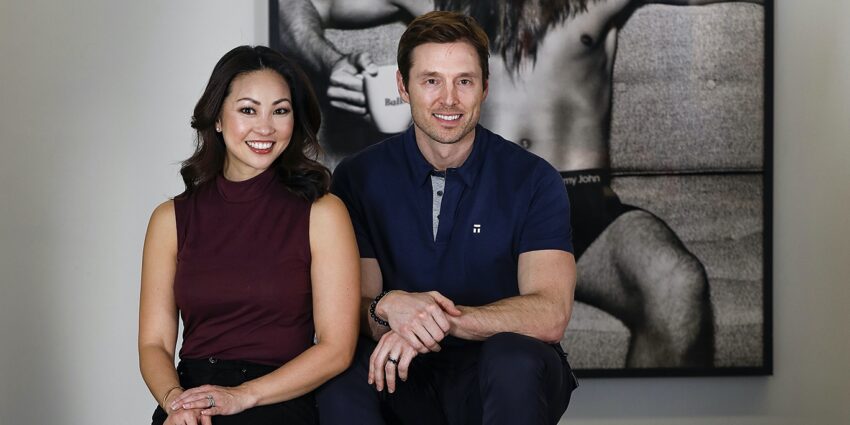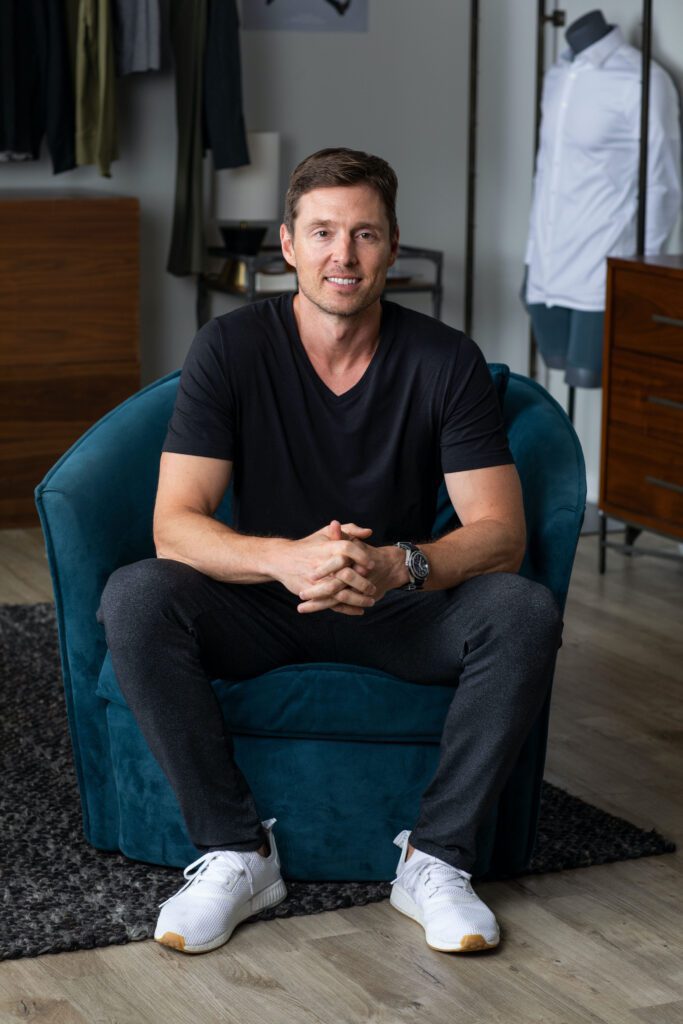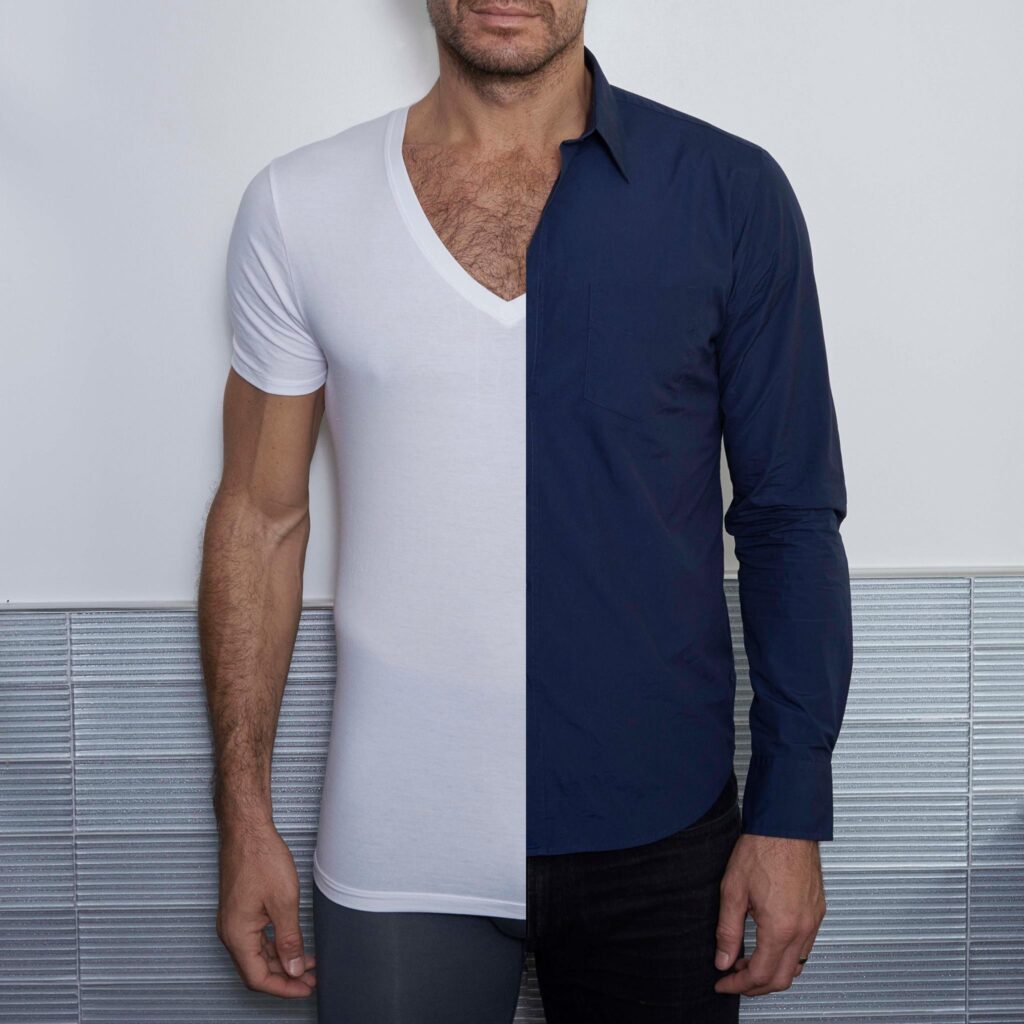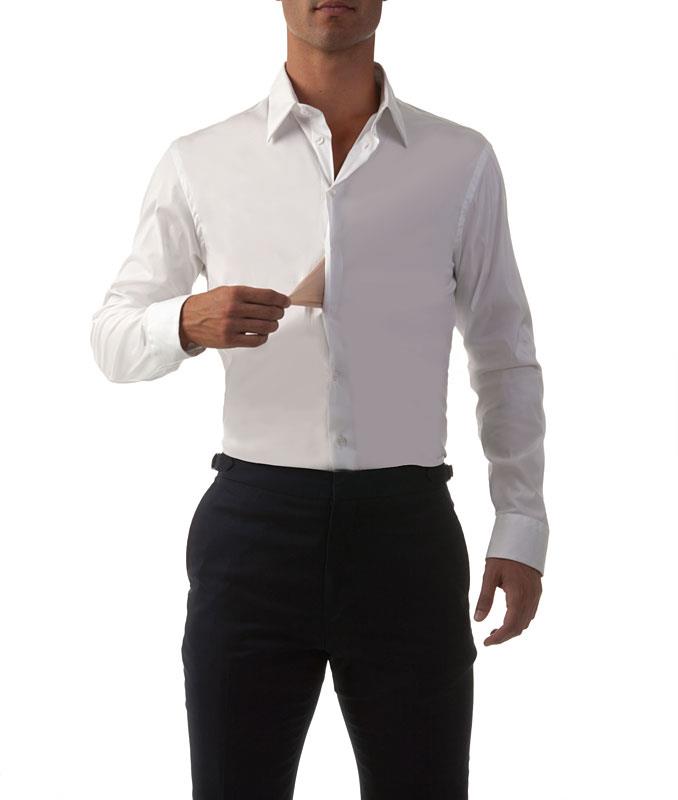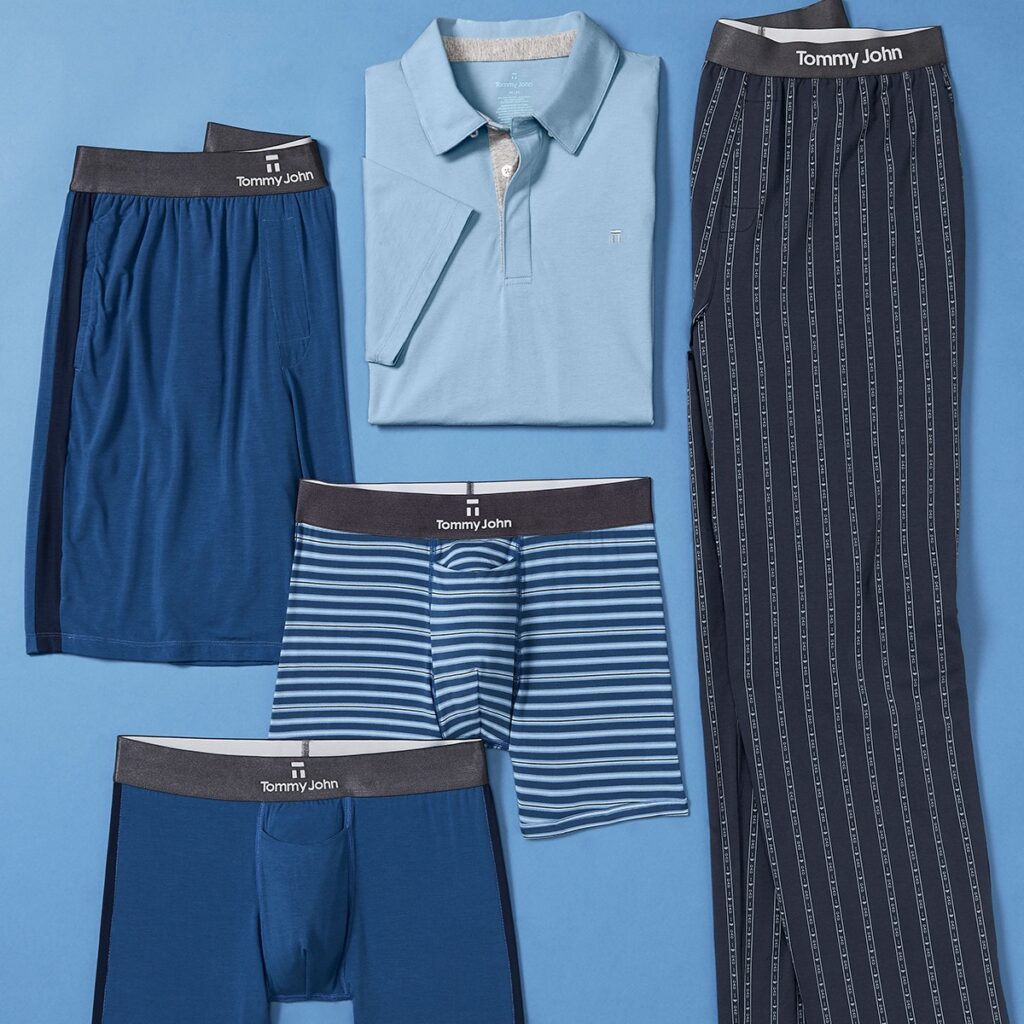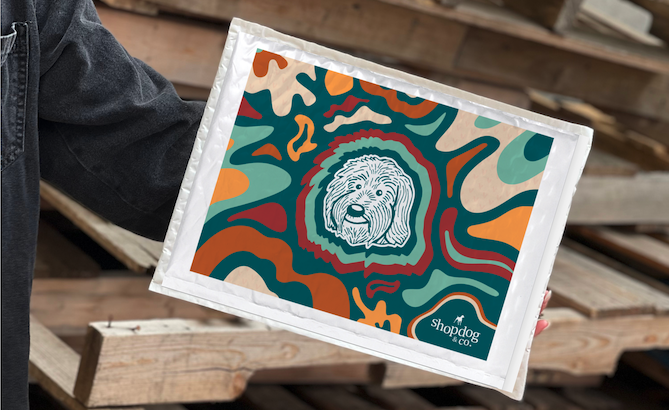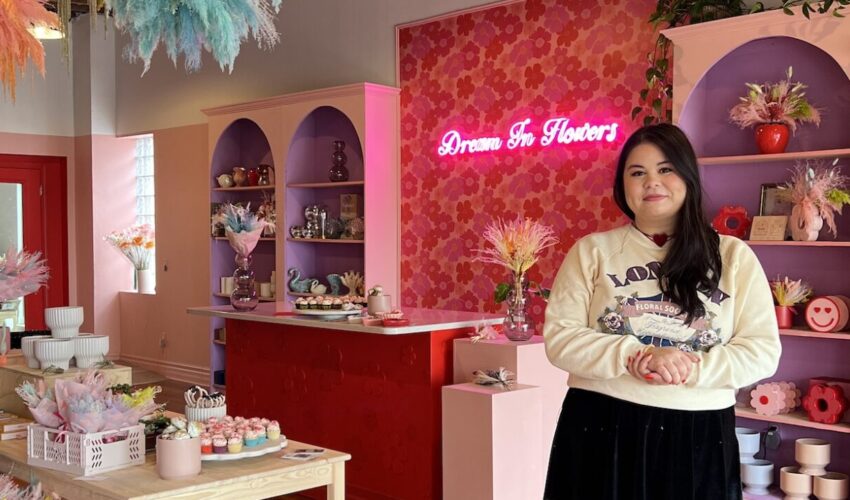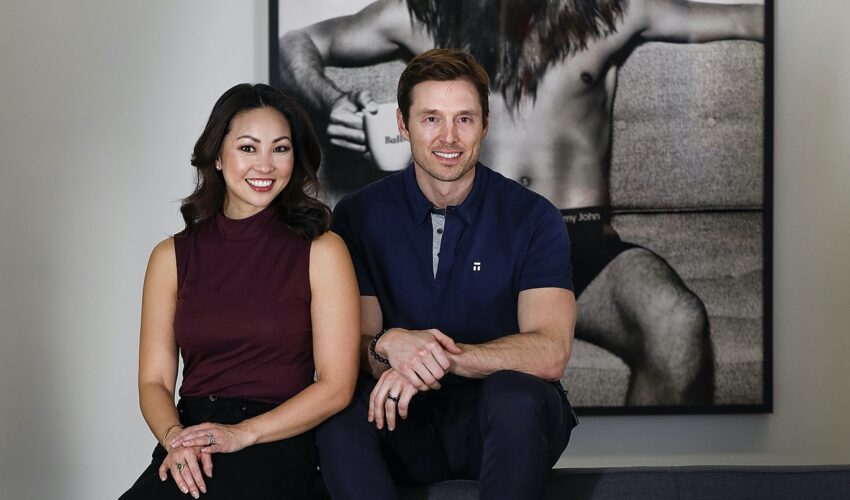Tommy John founders made pandemic move to Sioux Falls – and might be here to stay
Sept. 13, 2021
The couple who set out to reinvent men’s undergarments now calls Sioux Falls home.
Tom Patterson and his wife, Erin Fujimoto, are the founders of Tommy John, which has grown to a nationwide brand carried by major retailers, including Dick’s Sporting Goods, Dillard’s, Nieman Marcus, Nordstrom, Men’s Wearhouse and Scheels.
While the business success story is a unique one, their reason for returning to South Dakota, where Patterson grew up, has become a familiar narrative.
“COVID,” Patterson said. “Having a 4- and 6-year-old doing virtual school, New York and New Jersey locking down, playgrounds locking down, not being able to go outside and living in an apartment, we decided to come here for a few weeks.”
That was in April 2020. It turned into a month, which turned into three months.
Now, going on 18 months later, they’re Sioux Falls homeowners balancing their growing business in New York as their family has found more structure here.
“We wanted stability, and it certainly helped having networks and connections and having family here and friends growing up I could reconnect with,” said Patterson, a 1998 graduate of Milbank High School. “Sioux Falls is a really great community, and it’s changed so much over the last 20 years since I was in high school. It’s become such a great city, so we’ve really enjoyed our time here.”
Today, many Sioux Falls women will get to hear from Fujimoto, who joined the Sanford International Board last year and is the featured speaker at its women’s day lunch at the Sanford International golf tournament.
An Arizona native, she’d visited Sioux Falls for family events and now loves it, she said.
“Sioux Falls is great. It’s provided the security we need for our family, especially during the pandemic and being able to operate the business remotely and have balance in our lives,” she said.
Their connection to Sanford Health also was driven by the pandemic when Tommy John donated merchandise for health care front-line staff as a thank-you for their service.
“We got to know the Sanford community much more, and I was really excited to get the opportunity to be on the Sanford International Board,” Fujimoto said. “It’s just been such a great experience participating in the Lorraine Cross Award. One of our key initiatives is expanding on and building global clinics, so we have a trip planned to Ghana to visit a partner clinic, and with that has come the Sanford International women’s day.”
The pandemic has helped make it all possible, Patterson added.
“There’s no way we could run this business not being in New York City pre-COVID,” he said. “I think companies can run their companies really successfully over Zoom. That was one of our biggest concerns going into COVID.”
The brand backstory
The Tommy John story starts in the early 2000s when Patterson was working in medical device sales in California. His job involved selling pulse oximeters – small devices that measure oxygen saturation level through a fingertip – to health systems.
“I always wore a button-down shirt and tie and undershirt,” he said.
He’d take the shirts to a tailor for the desired fit but was out of options when it came to finding an undershirt that wouldn’t stretch, yellow or shrink.
“Why doesn’t anyone make a long, stretchy undershirt?” he wondered.
The question led him and Fujimoto to the garment district in downtown Los Angeles where they found fabric and took it to a tailor with a prototype Patterson sketched “for what I thought was the ultimate undergarment,” he said. “The idea worked, and I thought, gosh, maybe there are more people who have this same problem with their undershirt.”
He gave some to friends. They all called him back.
“Tom, if you ever make more of these, let me know, and I’ll buy a lot,” they told him.
So the couple found a manufacturer to make 200 of them, set up a website in the spring of 2008 and began selling online. Months later, the housing market crashed, and a retail recession followed. Patterson was laid off from his medical sales job and read an article that the best time to start a company was during a recession.
He cashed out his 401(k) and savings and went all-in.
“I didn’t want to be this ‘coulda, woulda, shoulda’ guy,” he said. “I just felt like I didn’t want to have any regrets.”
He put his sales skills to work and landed a meeting with a buyer at Neiman Marcus. When salesmen tried the undershirts and raved about them, a five-store test became 15 stores. About 65 percent of the inventory sold in the first month. Then, he went to Nordstrom and said “let me prove to you we can replicate this.”
In nine months, Tommy John was in 85 percent of Nordstrom stores.
When Fujimoto’s software sales job also was eliminated, Patterson “posted an internship opportunity on a mirror in the bathroom, and she decided to apply and got accepted,” he laughed. “But we really started it together.”
Fujimoto had started her career as a financial adviser and was drawn to entrepreneurship before Patterson.
“I had a startup that failed,” she said. “I started a website selling organic and natural clean-living products, and it was something I was personally passionate about and thought it’d be great to make my passion my business. And I love the process of starting a business – building a website, selecting the products – and then realized there’s a whole second phase of the business, which is marketing and promotion and getting your brand out there, and that’s where I, by myself, kind of lost steam.”
There were blessings and lessons from that business, though, she said.
One of them was that it inspired her future husband – they married in 2011 – to think about his own big idea.
“Our skill sets are complementary,” he said, adding that she excels in merchandising, planning and customer service while he handles product, sales and marketing.
In 2010, they decided to move across the country to fashion capital New York City, where their 500-square-foot apartment in Chelsea doubled as the Tommy John office. They got a “real office” a few year later, and business began to catapult in 2014 after radio host Howard Stern ended up talking about how the underwear had “changed his life,” Patterson said.
“It allowed us to create a new way to market underwear for men than had ever been done before.”
They invested heavily in advertising on SiriusXM and began expanding the product line to include loungewear, sleepwear and some men’s clothing.
A big evolution arrived in 2018 with the addition of a women’s line.
“For the first 10 years of our business, we probably talked about it every year – should we do women’s – and the answer was a very clear no,” Fujimoto said.
They figured the market was saturated, with more options already than women need.
But as Tommy John grew, the combination of women discovering it while shopping for men and of learning of men’s enthusiasm for the brand became too much to ignore, she said.
“We were hearing from our female customers … and it eventually it became so loud, Tom and I couldn’t ignore it anymore.”
Focus groups showed women were looking for “the same level of comfort and enthusiasm for her undergarments that he had,” she said. “Make it comfortable, make it great, make it premium, eliminate the distractions.”
They sold through six months of products in six weeks.
“That was something we couldn’t have predicted,” Fujimoto said. “There are always these hesitations, but she spoke with her wallet. It’s the fastest-growing division of our business. I expect it to be 50 percent of our business in the next year and a half.”
They now have 115 team members in their New York headquarters and manufacture in seven or eight countries, they said.
Other than some small investments in 2012, “Erin and I still control the company,” Patterson said. “We run the company. We have great investors and a great board, and that’s certainly helped us, but it’s been 13 years, and it hasn’t been an overnight success. We feel like the great brands take quite awhile to grow.”
What’s next
The pandemic seemingly brought more “pros” than “cons” for Tommy John.
On the challenging side, its office culture, which has been ranked among the best in New York City as a certified “Great Place to Work,” was something the founders had to work hard to maintain.
“We believe our in-person office culture is different and unique and exciting, and going to virtual was tough, but I think we have been able to find a way to make it work really well,” Patterson said.
There are maybe 30 people in the office now, who have returned on a voluntary basis. The founders estimate they’re in New York two out of every four or five weeks.
On the upside, the pandemic-driven work-from-home movement lends itself well to comfort-based apparel.
“Wearing pajamas and T-shirts and comfort clothing in a lot of ways helped our business grow faster because dress codes became more informal,” Patterson said. “And COVID opened the interest where we made some remote full-time hires, and I think you’ve seen companies consider recruiting outside of where they’re based because people are finding ways to successfully impact the business by not being there.”
New York City continues to make sense as a home base for the business given the availability of talent from the fashion-based schools in the area and the proximity to buyers, they said.
Tommy John’s growth likely will be driven largely by wholesale activity, including a “really large retail partnership in 2022,” Patterson said.
There are five retail stores nationwide: in Charlotte, North Carolina; Dallas; Houston; Nashville; and Scottsdale, Arizona. Tommy John is sold at Scheels in Sioux Falls, though Patterson doesn’t rule out additional retail in the market.
“I guess never say never,” he said. “I think our display at Scheels is pretty great, but selfishly we’d love to have one here.”
When Fujimoto tells the story today at the Sanford International, it will focus on growing the startup through her unique lens “and the different dynamics I’ve deal with being a mother, working with your husband,” she said.
“But also just, really, I hope to inspire the women and share my story, and I think that through sharing is how we connect in the community. So I just hope people walk away inspired with a positive message and know that no matter what their goals are, big or small, they can set out to achieve them as well.”

